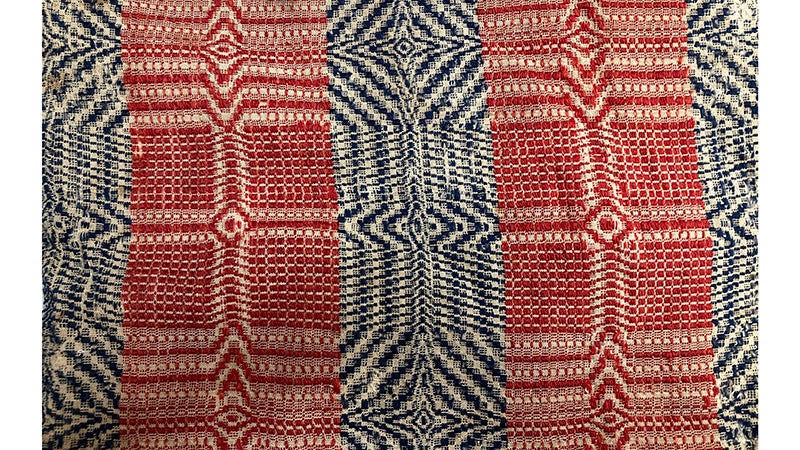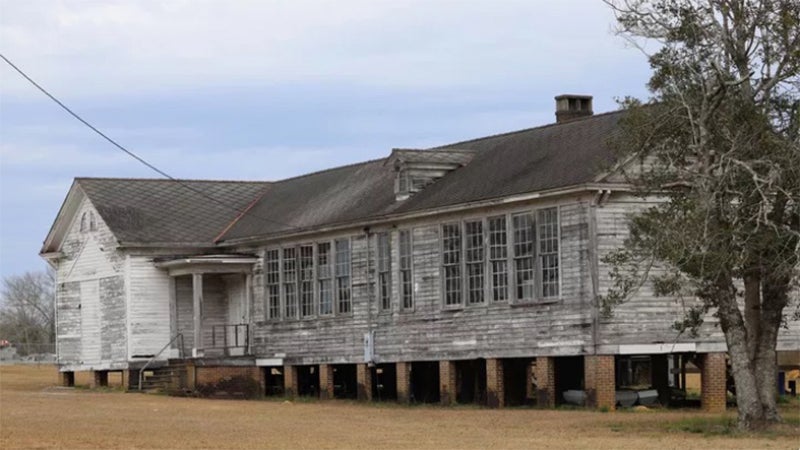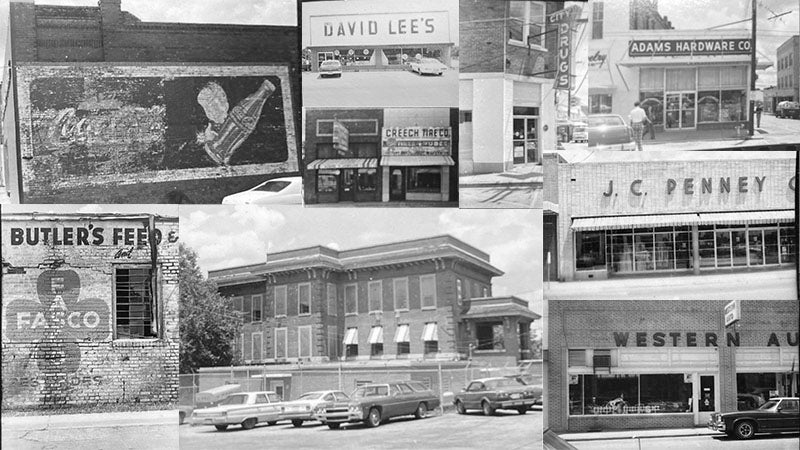Remember When: Horseshoe Bend, Riverside Inn put River Falls on map
Published 3:01 am Saturday, March 2, 2019

- The Riverside Inn in River Falls (1937).
Remember when – the Riverside Inn, combination service station, grocery store, and dance hall was located in River Falls on the Andalusia side of the Conecuh River before one crossed the old iron bridge built at the turn of the century. Historian Sidney Waits wrote about the “tourist cabins” that were operated in connection with the inn. He said it was one of the “earliest motels.” Hank Williams played there on many occasions. The late Chief Deputy Harvey Wilson remembered a certain New Year’s Eve when Hank and Audrey were in the Riverside Inn dance hall. A baby was found outside in the car – yes, it was “Little Hank!” No, Johnny and June never performed there!
Remember when – the horse shoe bend in the Conecuh River changed. On the old 1891 map, the horse shoe shape in the Conecuh River was much more distinct. That was the site of the Horse Shoe Lumber Company that manufactured the cross ties which made it possible for train tracks to be laid when the railroad line was extended into Andalusia from Searight in 1899. The River Falls Power Company established by the same owners brought permanent electrical power to the area.
Remember when – everyone was excited over the possibility of a great metropolis in the area of River Falls. The clamor had been that the rails were coming to River Falls and great growth was expected. A drafting firm out of Mobile produced a city map that laid out the city in perfect square with the main thoroughfare being named “Covington Avenue.” The route of the Mobile and Girard Railroad was shown on the map as was the location of the proposed depot building in “Saginaw.” Right in the middle of the town was a square block in which was printed “Courthouse Square.” This was the place they were planning to move the Courthouse from Andalusia to River Falls. No depot was ever built and there was great disappointment over the fact the rails did not come to River Falls. The old L & N did arrive but it did not have the impact the M & G would have afforded the town. Some of the old timers wonder what it would have been like had the plans for the big railroad line come to River Falls and brought with it the Courthouse! We can assume that the situation that routed the RR line to Andalusia would have been LOCAL POLITICS!
Remember when – the Devereux Hill marker got placed at the bottom of the hill. The hill once referred to as the “Bee Line Highway” is one of several “historic attractions” in the Andalusia area. It is named to commemorate the founder of the county, John William Devereux, a State Senator who wrote the enabling acts that created Covington County. He moved from Conecuh County near McGowin’s Bridge and moved to a site near Montezuma and built his log cabin home that he called “The Hermitage.” Devereux was our first county judge, a justice of the peace, and first postmaster. He was a man of great influence on county affairs and can be considered “the father of Covington County.”
Remember when – the First Baptist Church of Andalusia was known as the “First Missionary Baptist Church.” Although few written records exist, it is certain that the first building was a simple frame structure erected about the time of the War Between the States. The old Zion Association minutes of 1852 make the first mention of the Andalusia Church. The year of 1848 is generally accepted as the founding year.
The first pastorium under the leadership of Rev. H. B. Metcalfe was built on the corner of Central and East Three Notch Streets long before streets were ever paved where the T-P Flower and Gift Shop was later situated.
The second pastorium was built around 1926 during the pastorate of Dr. L. E. Barton was constructed a little further down the street at 604 East Three Notch adjacent to the old Rankin home that later became identified with the E. R. Merrills and the Floyd Scarboroughs. The Rankin home was moved to the banks of the Conecuh River cut into four pieces and restored to its original state by Charles and Jean Gantt. The brick pastorium, “the handsomest pastor’s home in Alabama and the most commodious in the state built to last 1000 years unless blown away by cyclone or until the Lord comes” was razed in 1988 and is now a parking lot. One account in The Covington News, September 22, 1927 reads, “It may be this house will honor God’s name by sheltering the shepherds of the flock with their families.”
Remember when – the last of the Three Notch oaks was said to be located at the intersection of Brooklyn Road and South Three Notch Street. A picture exists in one of the Waits’ historical society newsletters. Many say they remember the big oak tree with the cut on its side. Do you?
Remember when – the first automobile, “the gasoline buggy,” came to Andalusia. Bought by Charles J. Ward in Atlanta, it was one of the first Oldsmobiles built. Ward who owned a bicycle shop in Andalusia was on a business trip to Atlanta for the purpose of buying bicycles. He shipped the automobile back to Andalusia by the railroad. It is remembered that people from far and near crowded around the depot on the day of arrival. Less than a dozen of the crowd could boast of ever having seen an automobile. Many stood back through fear of an explosion. Others crowded close. Teams and horses were moved to a more secure place since their owners were fearful of a run-away!
Citizens up on the Court Square started betting on its speed. Some said 10 miles per hour; some said 15; and some guessed as high as 25 mph. (That was probably up there on the boardwalks of some of those saloons!) In the early days, Andalusia had the reputation of having more automobiles per population than any other town in the state!
Remember when – the last time you ate a Moon Pie and drank an RC Cola? The RC Bottling plant was originated as the Chero Cola Bottling Company in May of 1915. It was first located across the street from the present Clark Theatre on the corner of Troy Street and Court Square, the present site of the Walker Business and Gift gallery. In May 1939, the bottling works moved to Crescent Street on the corner of Opp Avenue. In those early years, the bottles were washed by hand and 23 bottles per minute was a good production of the finished product!
In writing about the RC Cola, the late Horace McInnish came to mind. He was the popular owner of the bottling company in the 1960s and 70s. My classmate Marilyn McInnish Williams and her brothers Carl and Bill and mother Betty Sue come to mind. A lot of bottles of delicious RC Cola were consumed back then by the many friends who visited their house – not to mention the fun had by all!
Recently I enjoyed getting to hear Dr. Ed Richardson, former AHS principal, speak at the Rotary Club meeting. He talked about current “trends” in small towns like Andalusia and Opp that can help the community grow. It is encouraging to learn that even in 1896, a citizen named “Yore Unkel Bill” wrote about “What Andalusia Needs” in The Covington Times.
From The Covington Times, January 31, 1896 – “Hit neads, in the furst plase, moar git up and git jeneraly all rownd —hit neads bigger crouds at chirch—hit neads bigger crouds at prare meatins—hit neads bigger crouds at Sundy scool—hit neads more scolars in scool—hit neads moar boys (so the gurls say)—hit neads a change in the murchanis’ plases of biznes soze to make things lok a little different—hit neads fuer ded cat fusses—hit neads a hoal pasale of work dun on the streats—hit neads the semitary cleaned oph—hit neads a brick cort howse—hit neads a bell on the scool howse—hit neads a rale rode, and a hoal lot moar!”
Like my old friend the late Berta McArtan Cook once said, “Things change through the years, honey, but not really!” And so it goes. We can REMEMBER WHEN a citizen over a hundred years ago said what Andalusians needed basically was more git up and git! Maybe we still do!
Sue Bass Wilson, AHS Class of 1965, is a local real estate broker and long-time member of the Covington Historical Society. She can be reached at suebwilson47@gmail.com.






